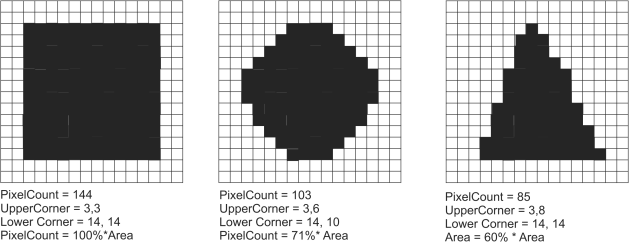Android Client App for consuming SAP SOAP Web services using ksoap2 library
November 22, 2013 6 Comments
Recently SAP lauched their SAP Mobile Platform 3.0 (more about that here ) and I decide to write about how one can develop an Android Client App that can consume SAP SOAP Web Services with the ksoap2 library. I am maybe a bit late but it still deserves some attention.
Even though recently I had the chance to try out for myself the SAP Mobile Platform 2.2 and develop some Demo Apps testing both MBO and OData concepts I still personally feel that there are many people out there that are still developing mobile apps for SAP the old-fashion-way: ask for their SAP ABAP developers to prepare a couple of web services and develop mobile clients for these.
One point is that many companies still haven’t updated their Netweaver Gateways, so they can not use the OData goodies that come along with the newer versions. Another reason is that a change of mindset is needed and acceptance of the new web technologies and REST as an architecture. And lest but not least is that there is still not a stable concept about the offline data management. MBOs were built with keeping that in mind, but SAP has decided not to support it anymore as it was a propriatery “protocol”. The Delta Query support that they mention sounds promising here but I have to try it out in order to judge it 🙂
I have one very old post about consuming SAP web services (or it should be consuming .NET web services that call RFC-enabled Function Modules from an SAP-Backend) where the landscape I had for development was SAP Backend, Visual Studio and SAP .NET connector library. Well, this time I had SAP Backend with enabled Webservices Runtime and as any normal developer would do: I made the use of the web services that you can build with SAP from any Remote-enabled Function module and develop clients that would consume this services. The best library out there that one can make use of at the moment is ksoap2 and since it is free you can use it and adapt it to your needs. I actually came to the idea of this blog post after reading many forums where people complained that they didn’t manage to get it work or they had to change the source and rebuild it after changing the names of the tags or something in the XML bulding logic.
How am I using the ksoap2 library to consume SAP Web services? Very elegant and smooth actually.
1. I developed an wrapper class for the SAPSerializationEnvelope that inherits from the SoapSerializationEnvelope where I just make it create XML-Requests in the SAP manner.
import java.io.IOException;
import org.ksoap2.SoapFault;
import org.ksoap2.serialization.SoapSerializationEnvelope;
import org.xmlpull.v1.XmlSerializer;
public class SAPSerializationEnvelope extends SoapSerializationEnvelope {
public String namespace;
public SAPSerializationEnvelope(int version, String namespace) {
super(version);
this.namespace= namespace;
}
@Override
public void write(XmlSerializer writer) throws IOException {
writer.setPrefix("urn", namespace);
writer.setPrefix("soapenv", env);
writer.startTag(env, "Envelope");
writer.startTag(env, "Header");
writeHeader(writer);
writer.endTag(env, "Header");
writer.startTag(env, "Body");
writeBody(writer);
writer.endTag(env, "Body");
writer.endTag(env, "Envelope");
}
@Override
public Object getResponse() throws SoapFault {
return super.getResponse();
}
}
2. Made a helper class for making calls.
import java.util.ArrayList;
import java.util.List;
import org.ksoap2.HeaderProperty;
import org.ksoap2.SoapEnvelope;
import org.ksoap2.serialization.SoapObject;
import org.ksoap2.serialization.SoapSerializationEnvelope;
import org.ksoap2.transport.HttpTransportSE;
public class SAPServiceCaller {
String NAMESPACE_SOAP = "http://schemas.xmlsoap.org/soap/envelope/";
static String NAMESPACE = "urn:sap-com:document:sap:soap:functions:mc-style";
static String SOAP_ACTION = "";
public static SoapObject webServiceCall(SoapObject request, String URL, boolean imp_types){
SoapObject response = null;
SAPSerializationEnvelope envelope = new SAPSerializationEnvelope(
SoapEnvelope.VER11, NAMESPACE);
envelope.implicitTypes = imp_types;
envelope.dotNet = false;
envelope.setAddAdornments(false);
envelope.env = SoapSerializationEnvelope.ENV;
envelope.setOutputSoapObject(request);
HttpTransportSE androidHttpTransport = new HttpTransportSE(URL, 30000);
try {
List<HeaderProperty> headerList = new ArrayList<HeaderProperty>();
headerList.add(new HeaderProperty("Authorization", "Basic "
+ org.kobjects.base64.Base64.encode("USER:PASS"
.getBytes())));
headerList.add(new HeaderProperty("Connection", "Keep-Alive"));
androidHttpTransport.debug = true;
androidHttpTransport.call(SOAP_ACTION, envelope, headerList);
String answer = androidHttpTransport.responseDump;
response = (SoapObject) envelope.bodyIn;
}catch(Exception e){
e.printStackTrace();
}
return response;
}
}
3. And used it later in calls. A simple call is as follows.
SoapObject request = new SoapObject(
"urn:sap-com:document:sap:soap:functions:mc-style",
"ZbapiGetRoutes");
request.addProperty("RoutesList", "");
SoapObject response;
response = SAPServiceCaller.webServiceCall(request, URL, false);
SoapObject routesList = (SoapObject) response.getProperty("RoutesList");
This is a simple code that calls a method to return a list of Routes that one has to visit and read the meters in homes and upload them later to the backend.
With this simple “trick” I managed to build a Demo app for an SAP Backend with ISU Component that was displaying the Routes and devices from which the Meter data were read and uploaded to the backend for later billing purposes.
Hope it helps someone out there.
In the following posts I will try to keep up with the trends and write something about what I learned from the course that SAP was offered at openSAP about Mobile development with the SAP Mobile Platform and maybe other ways how to achieve this as well.
Happy coding!

